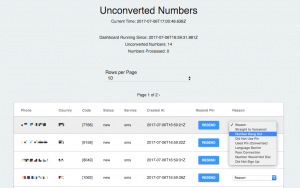As the CEO of your SaaS startup, you expected a sharp uptick in revenue post launching your Google or Facebook ads campaigns. You probably are witnessing rising traffic to your website, and may also be seeing more trial users. But what matters is, how many of these numbers end up paying. No positive news on that front?
Let me decode what’s happening.
Your KPIs are deceiving you. The rising interest in your website and products should have meant a proportional increase in new paying customers. If that is not happening, it is because:
- You need better traffic
- You need better leads
Ideally, your marketing communication needs to reach your target segment, the niche population whose problem is solved by your product. Unfortunately, not all clicks on your ads or users of your trial belong to that niche population.
Because you are spending marketing dollars and trial hosting costs, you want them spent on the right audience. But how to ensure that? Well, you need to ask yourself the following two questions:
1. Who are your website visitors?
When you launch an ads campaign, you pay the advertiser, let’s say google, some amount of money every time someone clicks on your ad. This amount is known as the Cost Per Click (CPC). Your potential customers search for the keywords you are competing for and your website appears at the top of a search result as an ad. When someone clicks on the ad, they get redirected to your website. Thus, you have an extra visitor.
However, the click may not have come from a potential customer. It may be from an automated computer program (or a ‘bot’), a brand hater trying to cost you money, or a click farm engaging a large group of low-paid workers hired to perform specific tasks, depending on the client engaging the click farm. They click on your ad and bounce off your page. A competitor, for instance, may hire a click farm to cost you ad-spend this way and lower your ranking in a search result at the same time.
The internet is loaded with articles describing the various ad frauds such as hidden ads, pixel stuffing, ad stacking, click stealing, click injection, etc. Here's a list of over 2500 of those by Dr. Augustine Fou for the curious.
As is intuitive, the fraudulent clicks are not going to convert to paying customers. But how do you protect your ad campaigns? No worries. Given the relevance, scale, and complexity, we have tools such as ClickCease, Shield, Lunio, etc. that address this problem. These tools monitor your website and track multiple data points like geolocation, click limit, VPN detection, session behavior, etc. to block fraudulent users automatically. Thus, fraudulent clicks do not cost you money.

Speaking of RingCaptcha, your second question should be:
2. Who are your trial users?
If you have a self-service funnel for revenue growth, i.e., you have a trial/freemium plan for potential customers to try the product themselves, then you need to make sure that the right people sign up for your trials. Why? You don't want:
- To spend thousands of dollars on hosting free trials for fake leads
- Your SDRs spend countless hours pursuing fake or non-serious leads
- Malicious customers with stolen credit cards sign up
- Cybercriminals using automated bots to create fake accounts to influence your online presence through product reviews to malware spreading
Also, it is difficult to identify and suspend fake accounts.
A genuinely interested lead would be willing to get into a sales cycle with you. They would not mind sharing their phone number and email with you.
RingCaptcha’s fully customizable verification widget provides Two-Factor Authentication (2FA) to ensure fake leads are screened out and suspicious requests are blocked.

Considering that OTP messages have an average success rate of 99%, this method of user verification ensures that the added layer wouldn’t block an interested user from signing up for a trial, yet would deter false leads who didn’t want to share a verified contact method.
Moreover, having the phone number of the qualified lead allows you to make them onboarding and sales calls.
Integrate the widget to your signup form in 90 seconds and save time and money spent on pursuing fake leads or on manual or other inefficient methods of lead qualification.
Fraud Prevention Stack Summary
If your ad-spend dollars are not bringing you revenue growth, then they are not reaching the right audience. Use a click fraud and ad fraud prevention service like ClickCease to clean up your traffic and RingCaptcha’s verification widget in your sign-up process to clean up your leads.
Companies like Dreamfactory decreased their AWS hosting costs by an average of $1,200 per month and UXPin reduced false leads by 50% by employing this Fraud Prevention Stack. So will you.
Talk to our team today for a demo. Email us any questions you have at support@ringcaptcha.com. Happy savings!


 Security
Security 

